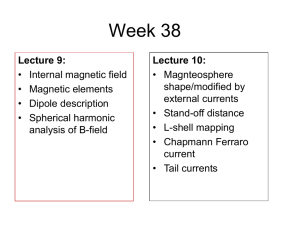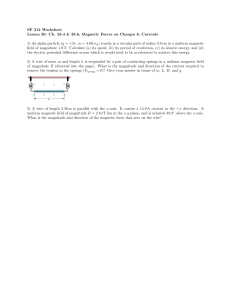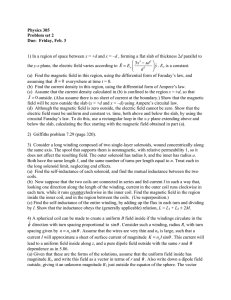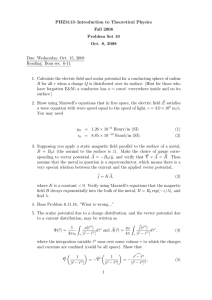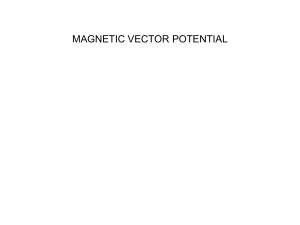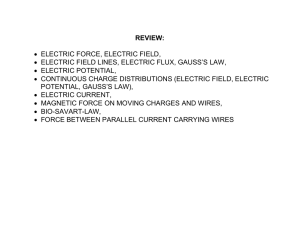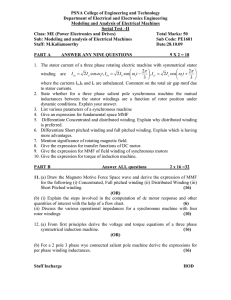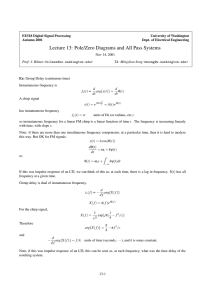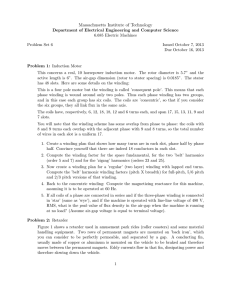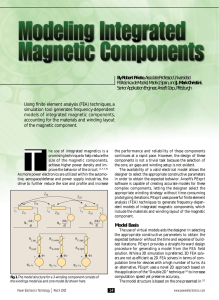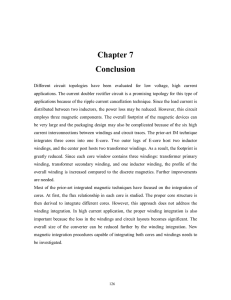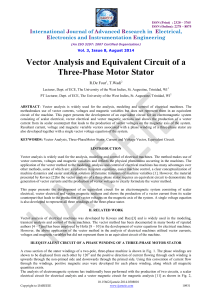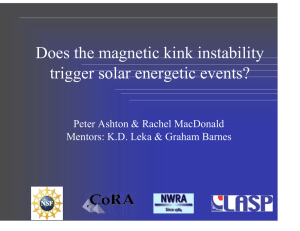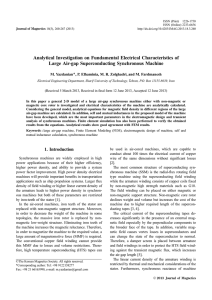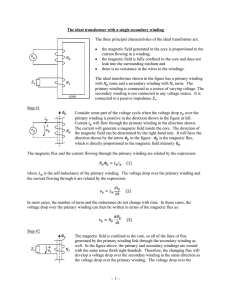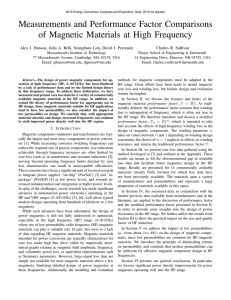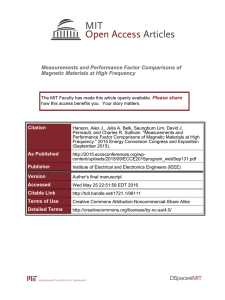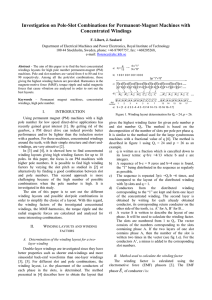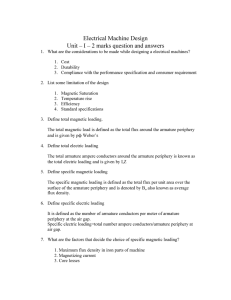Physics 304 Problem Set 10 Due: Wednesday, Nov. 16
advertisement
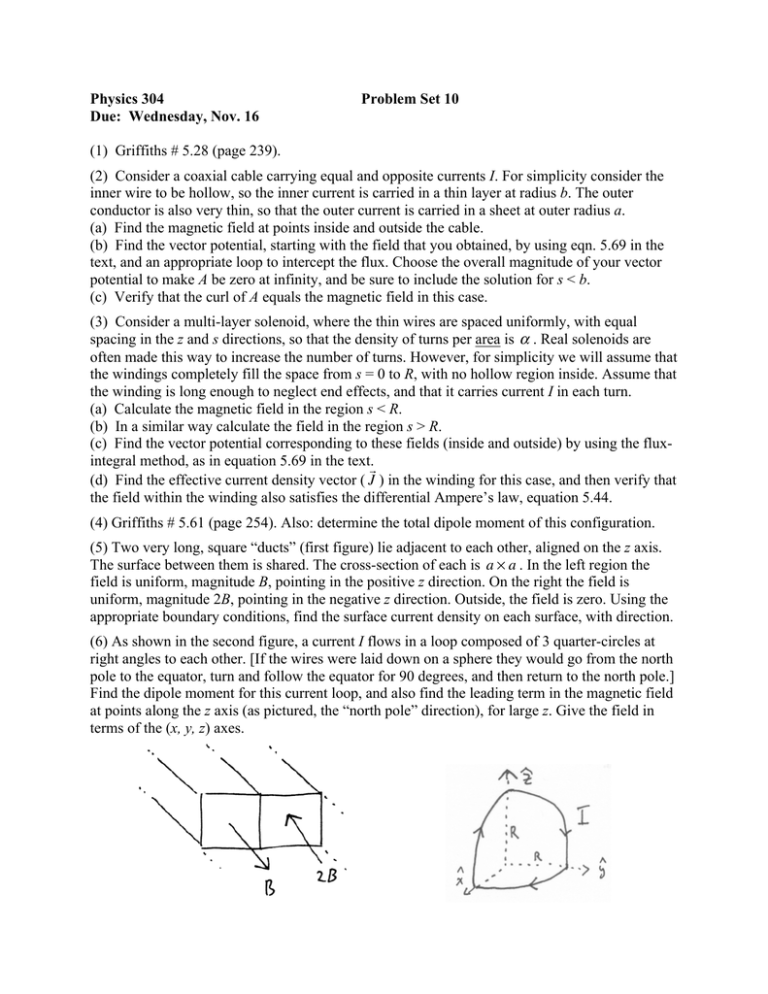
Physics 304 Due: Wednesday, Nov. 16 Problem Set 10 (1) Griffiths # 5.28 (page 239). (2) Consider a coaxial cable carrying equal and opposite currents I. For simplicity consider the inner wire to be hollow, so the inner current is carried in a thin layer at radius b. The outer conductor is also very thin, so that the outer current is carried in a sheet at outer radius a. (a) Find the magnetic field at points inside and outside the cable. (b) Find the vector potential, starting with the field that you obtained, by using eqn. 5.69 in the text, and an appropriate loop to intercept the flux. Choose the overall magnitude of your vector potential to make A be zero at infinity, and be sure to include the solution for s < b. (c) Verify that the curl of A equals the magnetic field in this case. (3) Consider a multi-layer solenoid, where the thin wires are spaced uniformly, with equal spacing in the z and s directions, so that the density of turns per area is ! . Real solenoids are often made this way to increase the number of turns. However, for simplicity we will assume that the windings completely fill the space from s = 0 to R, with no hollow region inside. Assume that the winding is long enough to neglect end effects, and that it carries current I in each turn. (a) Calculate the magnetic field in the region s < R. (b) In a similar way calculate the field in the region s > R. (c) Find the vector potential corresponding to these fields (inside and outside) by using the fluxintegral method, as in equation 5.69 in the text.! (d) Find the effective current density vector ( J ) in the winding for this case, and then verify that the field within the winding also satisfies the differential Ampere’s law, equation 5.44. (4) Griffiths # 5.61 (page 254). Also: determine the total dipole moment of this configuration. (5) Two very long, square “ducts” (first figure) lie adjacent to each other, aligned on the z axis. The surface between them is shared. The cross-section of each is a ! a . In the left region the field is uniform, magnitude B, pointing in the positive z direction. On the right the field is uniform, magnitude 2B, pointing in the negative z direction. Outside, the field is zero. Using the appropriate boundary conditions, find the surface current density on each surface, with direction. (6) As shown in the second figure, a current I flows in a loop composed of 3 quarter-circles at right angles to each other. [If the wires were laid down on a sphere they would go from the north pole to the equator, turn and follow the equator for 90 degrees, and then return to the north pole.] Find the dipole moment for this current loop, and also find the leading term in the magnetic field at points along the z axis (as pictured, the “north pole” direction), for large z. Give the field in terms of the (x, y, z) axes.

